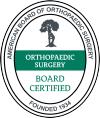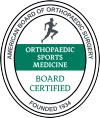Sports Medicine
Sports Injuries
Sports injuries occur when playing indoor or outdoor sports or while exercising. They can result from accidents, inadequate training, improper use of protective devices, or insufficient stretching or warm-up exercises. The most common sports injuries are sprains and strains, fractures and dislocations.
The most common treatment recommended for injury is rest, ice, compression and elevation (RICE).
- Rest: Avoid activities that may cause injury.
- Ice: Ice packs can be applied to the injured area, which will help reduce swelling and pain. Ice should be applied over a towel on the affected area for 15-20 minutes, four times a day, for several days. Never place ice directly over the skin.
- Compression: Compression of the injured area also helps reduce swelling. Elastic wraps, air casts and splints can accomplish this.
- Elevation: Elevate the injured part above your heart level to reduce swelling and pain.
Some of the measures that are followed to prevent sports-related injuries include:
- Follow an exercise program to strengthen the muscles.
- Gradually increase your exercise level and avoid overdoing the exercise.
- Ensure that you wear properly-fitted protective gear such as elbow guards, eye gear, facemasks, mouth guards and pads, comfortable clothes, and athletic shoes before playing any sports activity, which will help reduce the chances of injury.
- Make sure that you follow warm-up and cool-down exercises before and after the sports activity. Exercises will help stretch muscles, increase flexibility and reduce soft tissue injuries.
- Avoid exercising immediately after eating a large meal.
- Maintain a healthy diet, which will nourish the muscles.
- Avoid playing when you are injured or tired. Take a break for some time after playing.
- Learn all the rules of the game you are participating in.
- Ensure that you are physically fit to play the sport.
Some of the common sports injuries include:
Martial Arts Injuries
Coming soon
Shoulder Injuries
Severe pain in your shoulders while playing your favorite sport, such as tennis, basketball and gymnastics, may be caused by a torn ligament or dislocation of the shoulder bone. This may result from overuse of your shoulder while playing sports. Simple pain or acute injuries may be treated with conservative treatment, while chronic injuries may require surgical treatment.
Hip Injuries
Fractures of the femur bone, labral tear and hip dislocation are some of the common sports injuries affecting the hip. The hip joint bears more weight and is more susceptible for injuries while playing sports. Hip injuries require immediate medical intervention to avoid further complications. Rehabilitation programs and physical therapy is often recommended following medical intervention, where you need to perform certain exercises to strengthen your muscles and improve movements.
Knee Injuries
The anterior cruciate ligament (ACL) is major stabilizing ligament in the knee, which may tear with overuse while playing sports. The ACL has poor ability to heal and may cause instability. Other common sports injuries in the knee include cartilage damage and meniscal tear. Knee injuries during sports may require surgical intervention, which can be performed using open surgical or a minimally invasive technique. Your surgeon will recommend physical therapy to strengthen your muscles, and improve elasticity and movement of the bones and joints.
Sprains & Strains
What are Sprains and Strains?
Sprains and strains are injuries affecting the muscles and ligaments. A sprain is an injury or tear of one or more ligaments that commonly occurs at the wrist, knee, ankle or thumb. A strain is an injury or tear to the muscle. Strains occur commonly in the back and legs.
Causes of Sprains and Strains
Sprains and strains occur due to overstretching of the joints during sports activities and accidents such as falls or collisions. It may be due to fatigue or not warming up before an activity.
Symptoms of Sprains and Strains
Symptoms of sprains include:
- Pain
- Swelling
- Tenderness
- Bruising
- Joint stiffness
Symptoms of strains include
- Muscle spasm and weakness
- Pain in the affected area
- swelling
- Redness
- bruising
Immediate Care for Sprains and Strains
Immediately following an injury and before being evaluated by your doctor, you should initiate the P.R.I.C.E. method of treatment.
- Protection: Protect the injured area with the help of a support.
- Rest: Rest the affected area as more damage could result from putting pressure on the injury.
- Ice: Ice should be applied over a towel to the affected area for 15-20 minutes every two to three hours during the day. Never place ice directly over the skin.
- Compression: Wrapping with an elastic bandage or an elasticated tubular bandage can help to minimize the swelling and provide support to the injured area.
- Elevation: Elevating the injured area above heart level will also help with swelling and pain.
Diagnosis of Sprains and Strains
Diagnosis involves a thorough physical examination. Your doctor will inspect the area of injury and see how well you move the muscle or joint. X-rays or other tests may be ordered to rule out fractures or other problems.
Treatment of Sprains and Strains
Your doctor may prescribe nonsteroidal anti-inflammatory drugs to reduce the pain and inflammation of a sprain or strain. A period of bracing may be necessary. Physiotherapy may be recommended for moderate to severe injuries. Surgery is rarely needed but may be suggested for torn ligaments and tendons.
Most sprains and strains show significant improvement in about 2 weeks. Severe injuries sometimes take months to heal. Strenuous activity should be avoided for at least 8 weeks to allow proper healing.
Fractures & Trauma
A bone fracture is a medical condition in which a bone is cracked or broken. It is a break in the continuity of the bone. While many fractures are the result of high force impact or stress, bone fracture can also occur because of certain medical conditions that weaken the bones, such as osteoporosis.
The word “Fracture” implies a broken bone. A bone may get fractured completely or partially and it is caused commonly from trauma due to fall, motor vehicle accident or sports. Thinning of the bone due to osteoporosis in the elderly can cause the bone to break easily. Overuse injuries are common cause of stress fractures in athletes.
Types of fractures include:
- Simple fractures in which the fractured pieces of bone are well aligned and stable.
- Unstable fractures are those in which fragments of the broken bone are misaligned and displaced.
- Open (compound) fractures are severe fractures in which the broken bones cut through the skin. This type of fracture is more prone to infection and requires immediate medical attention.
- Greenstick fractures is a unique fracture in children that involves bending of one side of the bone without any break in the bone.
Fracture Healing
Our body reacts to a fracture by protecting the injured area with a blood clot and callus or fibrous tissue. Bone cells begin forming on the either side of the fracture line. These cells grow towards each other and thus close the fracture.
Medical Therapy
The objective of early fracture management is to control bleeding, prevent ischemic injury (bone death) and to remove sources of infection such as foreign bodies and dead tissues. The next step in fracture management is the reduction of the fracture and its maintenance. It is important to ensure that the involved part of the body returns to its function after fracture heals. To achieve this, maintenance of fracture reduction with immobilization technique is done by either non-operative or surgical method.
Non-operative (closed) therapy comprises of casting and traction (skin and skeletal traction).
- Casting
Closed reduction is done for any fracture that is displaced, shortened, or angulated. Splints and casts made up of fiberglass or plaster of Paris material are used to immobilize the limb. - Traction
Traction method is used for the management of fractures and dislocations that cannot be treated by casting. There are two methods of traction namely, skin traction and skeletal traction.
Skin traction involves attachment of traction tapes to the skin of the limb segment below the fracture. In skeletal traction, a pin is inserted through the bone distal to the fracture. Weights will be applied to this pin, and the patient is placed in an apparatus that facilitates traction. This method is most commonly used for fractures of the thighbone.
Surgical Therapy
- Open Reduction and Internal Fixation (ORIF)
This is a surgical procedure in which the fracture site is adequately exposed and reduction of fracture is done. Internal fixation is done with devices such as Kirschner wires, plates and screws, and intramedullary nails. - External fixation
External fixation is a procedure in which the fracture stabilization is done at a distance from the site of fracture. It helps to maintain bone length and alignment without casting.
External fixation is performed in the following conditions:
- Open fractures with soft-tissue involvement
- Burns and soft tissue injuries
- Pelvic fractures
- Comminuted and unstable fractures
- Fractures having bony deficits
- Limb-lengthening procedures
- Fractures with infection or non-union
Rehabilitation
Fractures may take several weeks to months to heal completely. You should limit your activities even after the removal of cast or brace so that the bone becomes solid enough to bear the stress. Rehabilitation program involves exercises and gradual increase in activity levels until the process of healing is complete.









